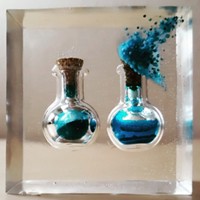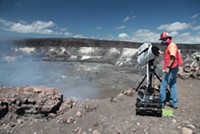Advertisement
Grab your lab coat. Let's get started
Welcome!
Welcome!
Create an account below to get 6 C&EN articles per month, receive newsletters and more - all free.
It seems this is your first time logging in online. Please enter the following information to continue.
As an ACS member you automatically get access to this site. All we need is few more details to create your reading experience.
Not you? Sign in with a different account.
Not you? Sign in with a different account.
ERROR 1
ERROR 1
ERROR 2
ERROR 2
ERROR 2
ERROR 2
ERROR 2
Password and Confirm password must match.
If you have an ACS member number, please enter it here so we can link this account to your membership. (optional)
ERROR 2
ACS values your privacy. By submitting your information, you are gaining access to C&EN and subscribing to our weekly newsletter. We use the information you provide to make your reading experience better, and we will never sell your data to third party members.
Sustainability
Newscripts
What can you do with many tons of sodium?
by Craig Bettenhausen
December 16, 2018
| A version of this story appeared in
Volume 96, Issue 49
Modeling Earth’s molten core

A 12-metric-ton ball of sodium metal in a steel case stands in a large hangar at the University of Maryland, College Park. Come on the right day and the sodium will be molten and spinning at 240 r/min.
At the center of the sodium is a steel sphere, which can spin independently. Physics professor Dan Lathrop designed this extreme apparatus as a model of Earth’s core, which features a solid iron sphere surrounded by molten metal, also mostly iron. The goal is to better understand our planet’s magnetic field, which scientists attribute to the motion of the molten iron, called a dynamo effect.
That field protects earthlings from a variety of solar and cosmic radiation, but it’s always changing, albeit slowly. Geological evidence suggests that the field has even reversed polarity many times over Earth’s history, Lathrop tells Newscripts. However, he says, “we have no predictive science of the Earth’s magnetic field.”
Lathrop’s team would like to see a magnetic field emerge spontaneously in their experiment from the sodium’s motion. So far, the researchers have been able to apply a magnetic field and amplify it to eight times its original strength. Soon, they plan to install baffles on the center steel ball. These, theoretical calculations from a collaborator suggest, will add turbulence that may push the system over the edge to dynamo status.
They use sodium because it’s the best electrical conductor among liquid metals, Lathrop says. Despite its habit of exploding in the presence of water, it’s easier to handle than molten iron. Some nuclear power plants use sodium as a heat-transfer fluid, so its material compatibilities and handling procedures are well researched. Lathrop himself has added to the sodium safety literature: after a smaller version of the experiment caught fire in 2005, his group developed a method for quenching a molten-sodium fire using liquid nitrogen and published it in the Fire Safety Journal (2013, DOI: 10.1016/j.firesaf.2013.02.001).
Just your basic lake

Lathrop might have saved some money if he had set up his experiment in 1947. That year, the US War Assets Administration dumped more than 9,000 kg of metallic sodium into Washington State’s Lake Lenore. The metal, which ignites and explodes when it touches water, was leftover from making WWII explosives. The military couldn’t find a private carrier willing to haul the load to a buyer because the containers had deteriorated. So soldiers drove them to Lake Lenore, rolled them off a cliff, and watched them blow up.
Advertisement
It might not be the solution chosen today, but it wasn’t as crazy as it might seem. If the lake had started at a roughly neutral pH, that sodium load could have raised the pH to around 9.2, a shift to basic conditions that would have been troublesome for any fish. But according to a paper published in 1958, the lake naturally averages a pH of 9.9 (Limnol. Oceanogr. 1958, DOI: 10.4319/lo.1958.3.1.0051), making even 9,000 kg of sodium produce less than a rounding error of pH change. Which is why the military chose the site. A video of the event describes Lake Lenore as then being an “alkali lake . . . devoid of fish.”
Enter the Lahontan cutthroat trout. “Lahontans are enjoyed by anglers because of their appearance and the large sizes they can attain in Lenore (up to 10 lb [4.5 kg]),” says Chad Jackson of the Washington Department of Fish and Wildlife. Unlike most other fish species, he tells Newscripts, Lahontan cutthroat trout can tolerate waters with high alkalinity. So the state has been stocking the lake with them since the mid-1980s.
Beyond just being fun for fishing enthusiasts, the Lahontan is the top aquatic predator in Lenore and in several other alkali lakes around North America. By controlling populations of insects, amphibians, and the occasional smaller base-hardy fish, the hard-core trout plays an important role in these specialized, unusual ecosystems.
Craig Bettenhausen wrote this week’s column. Please send comments and suggestions to newscripts@acs.org.





Join the conversation
Contact the reporter
Submit a Letter to the Editor for publication
Engage with us on Twitter